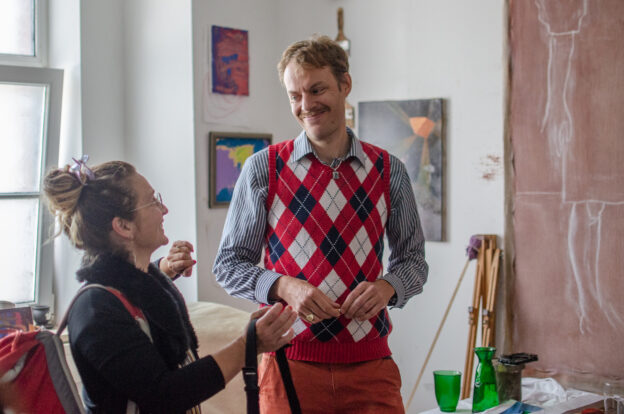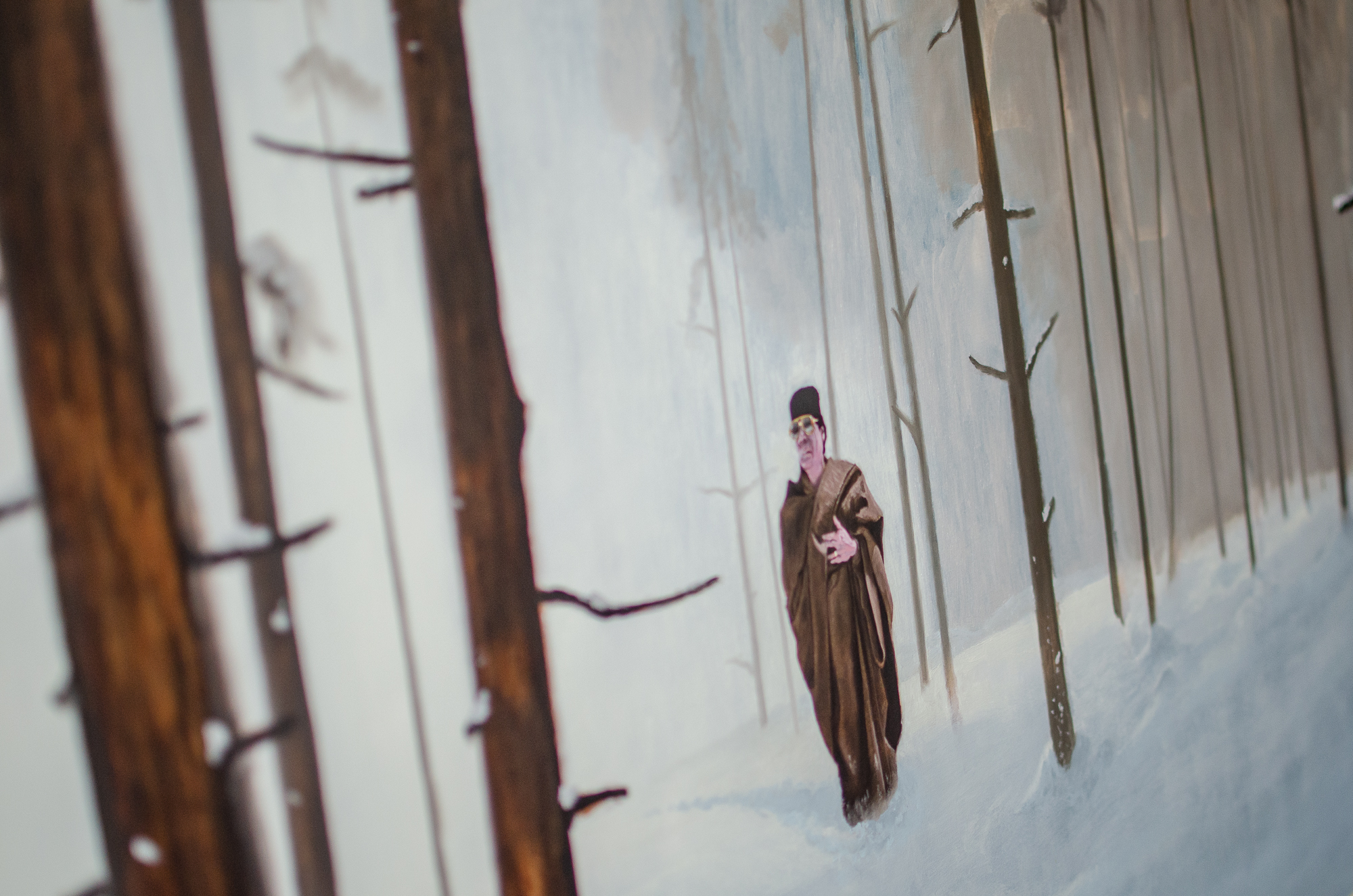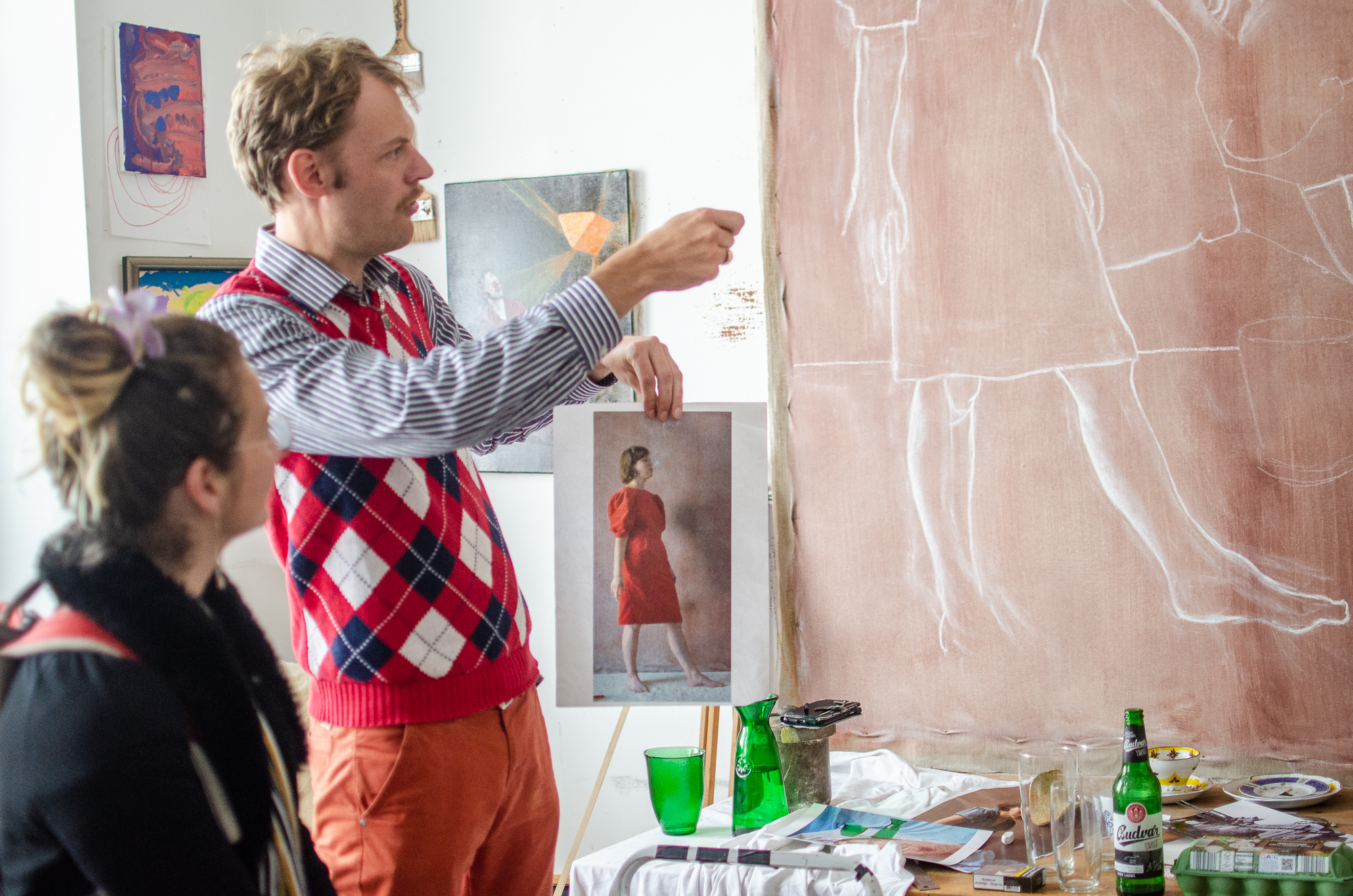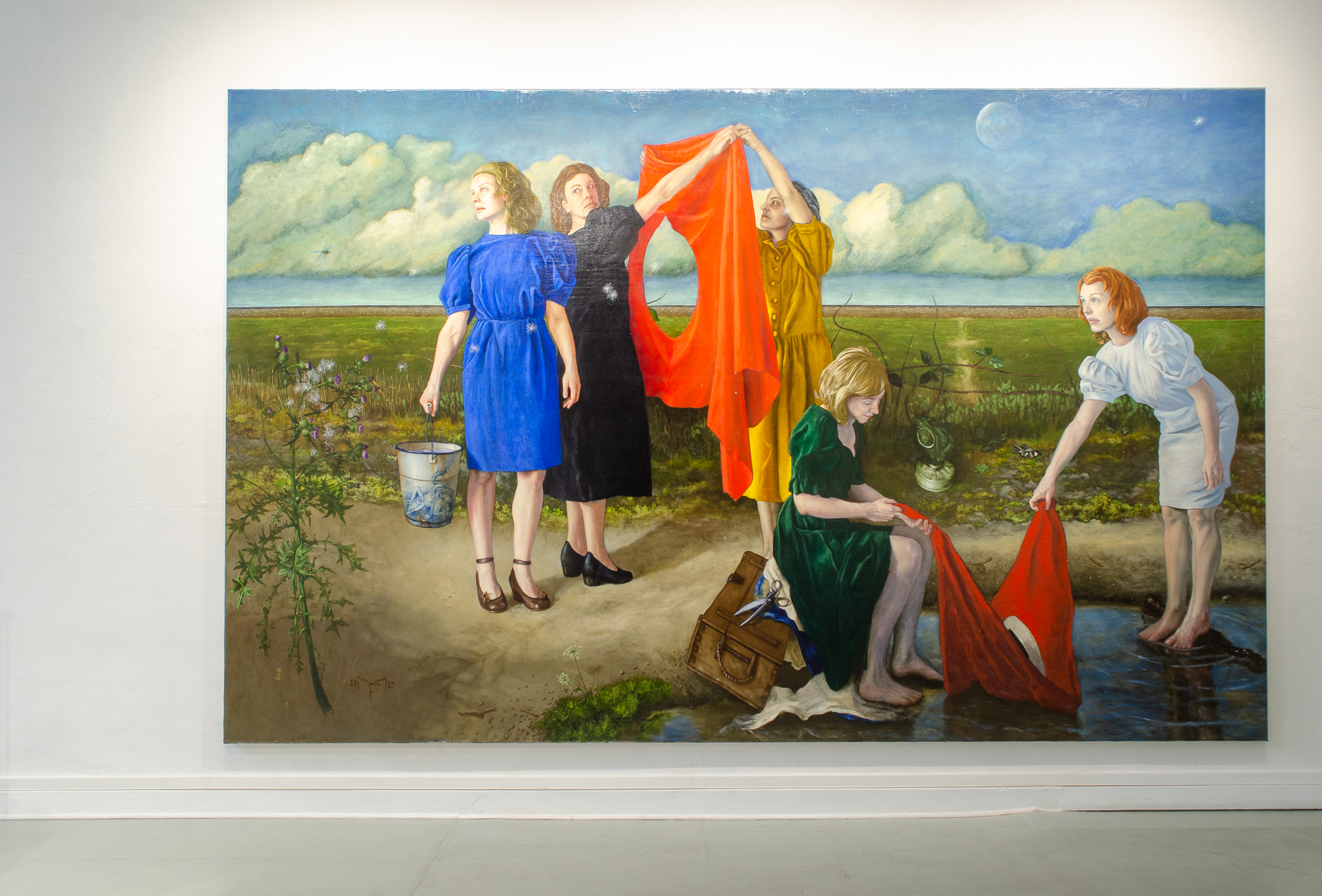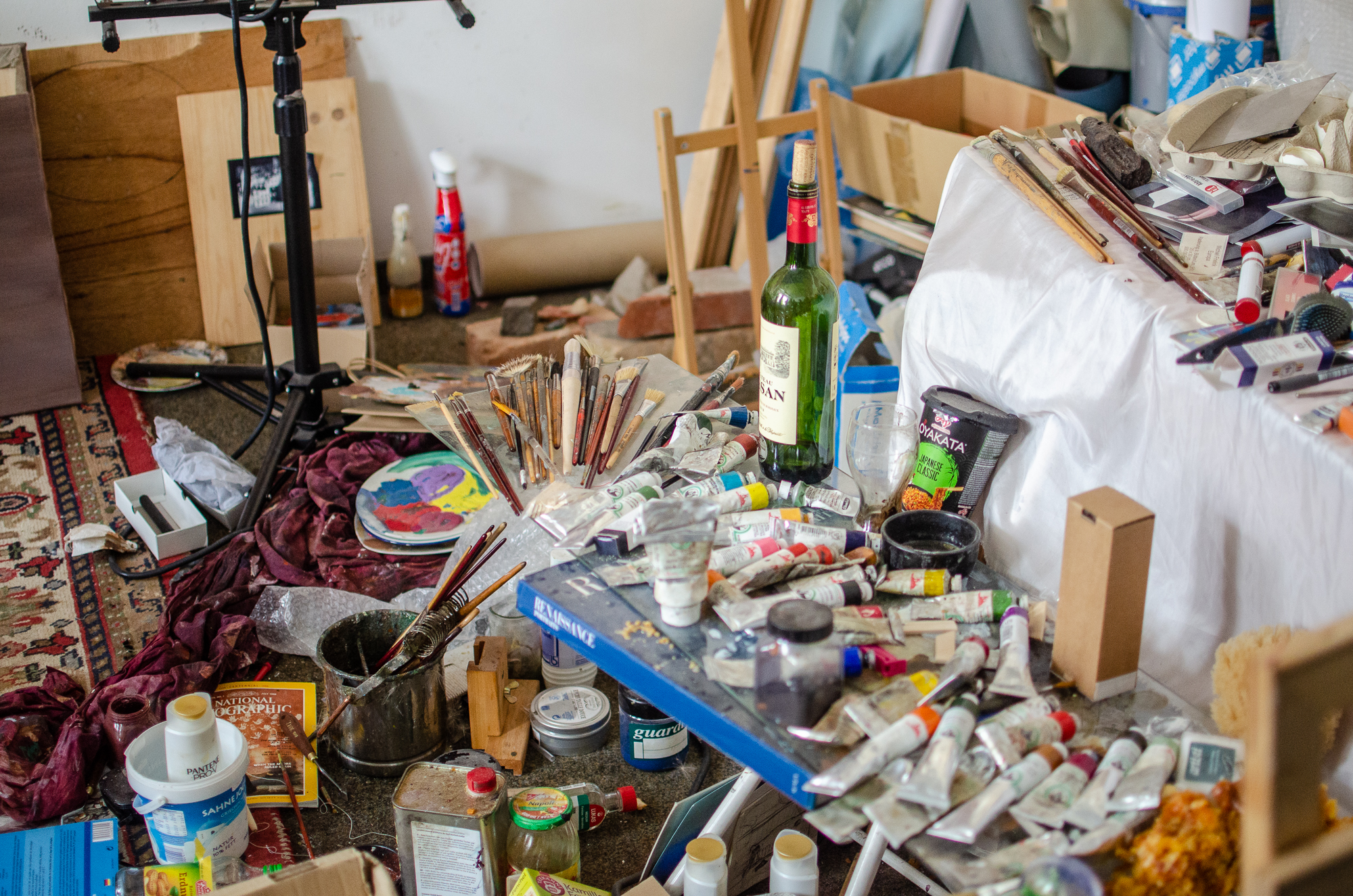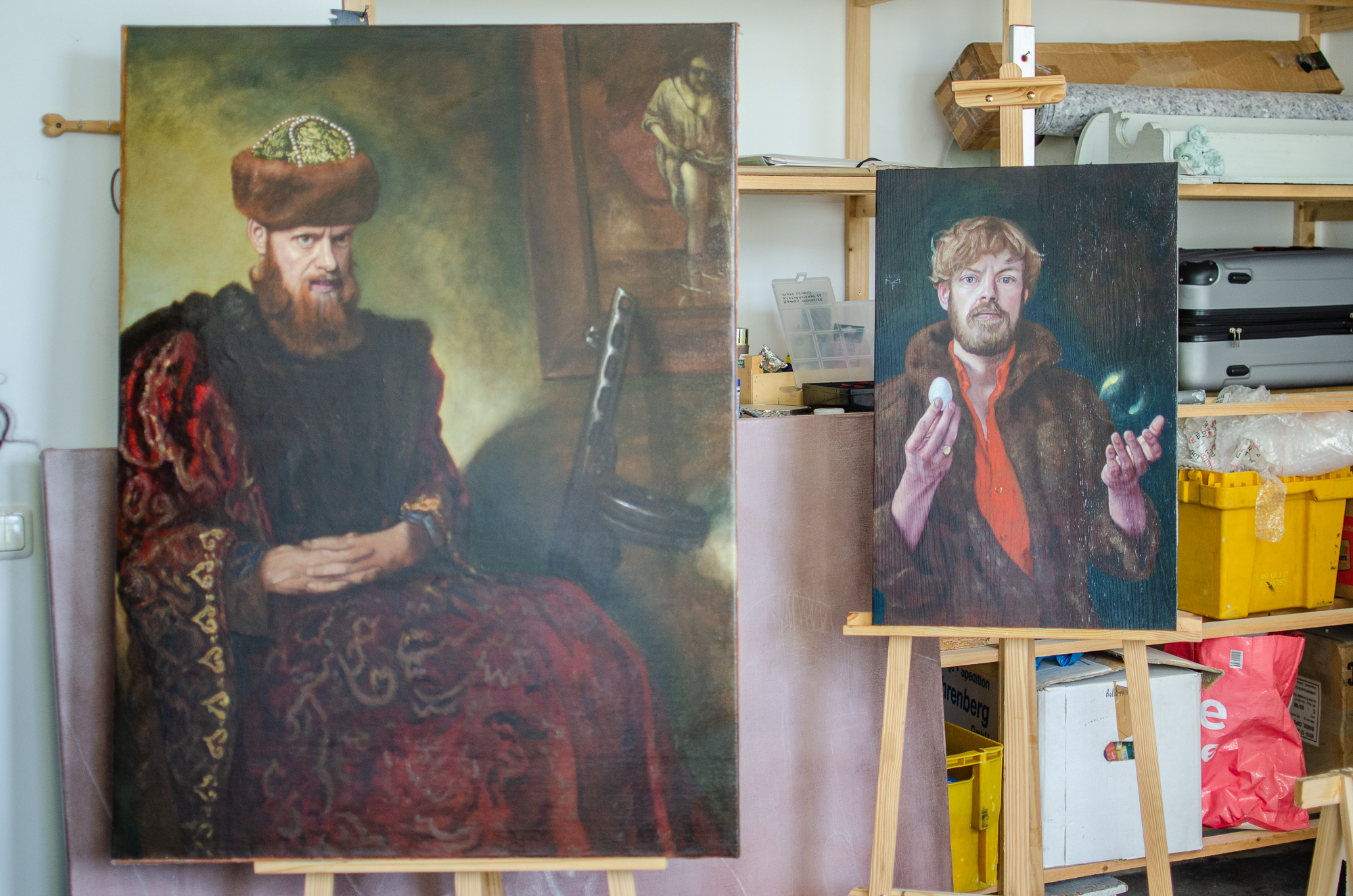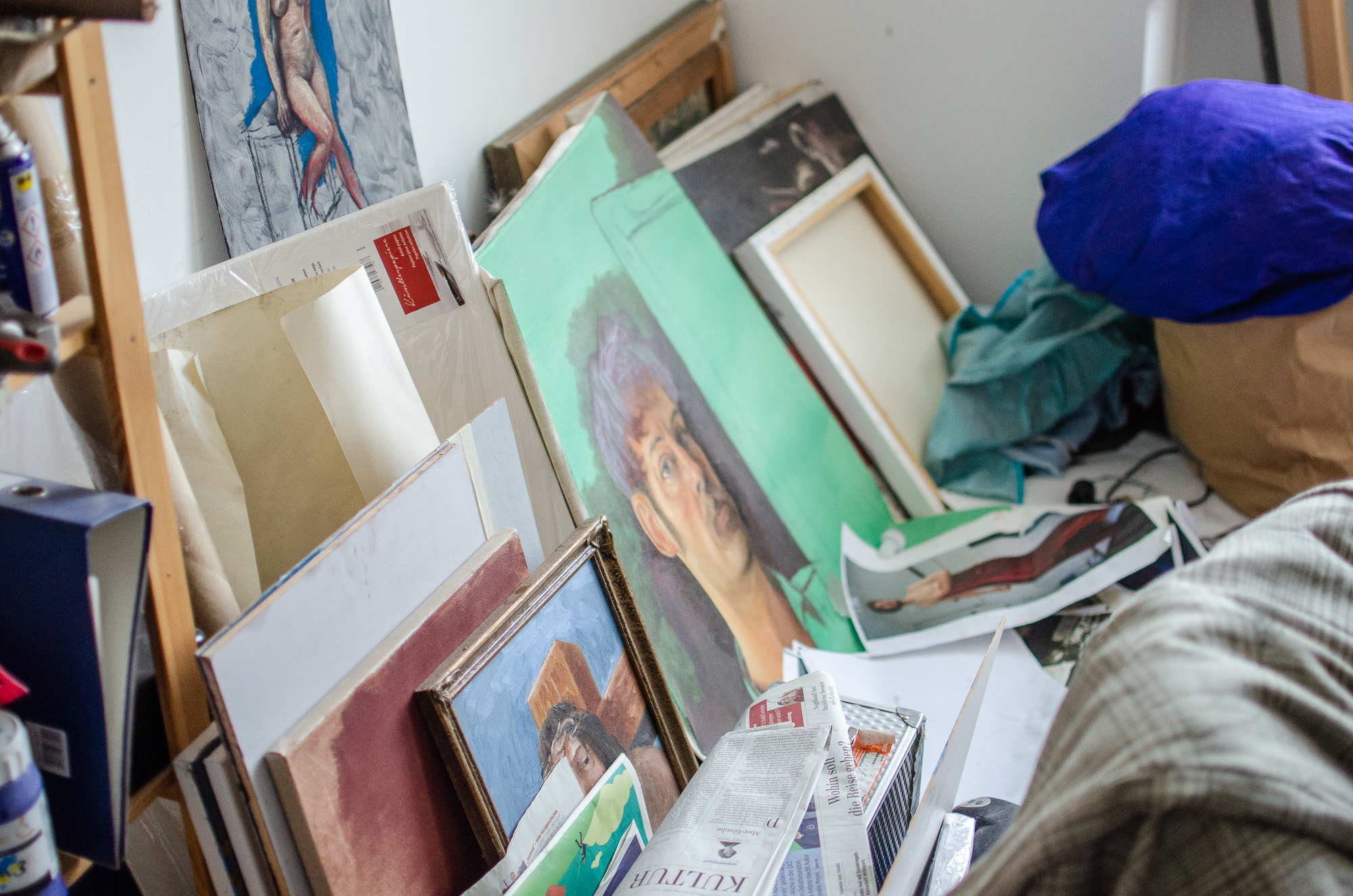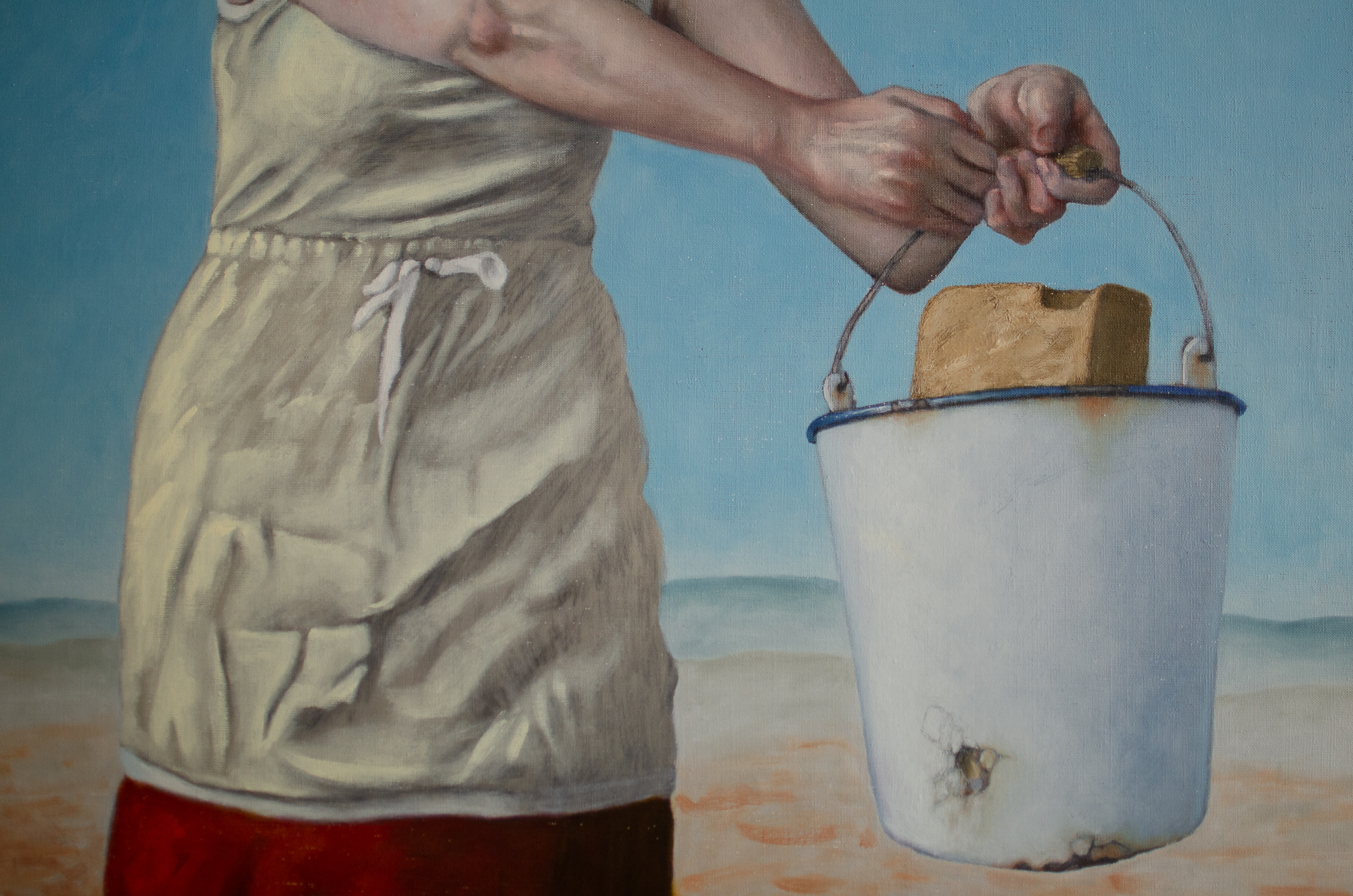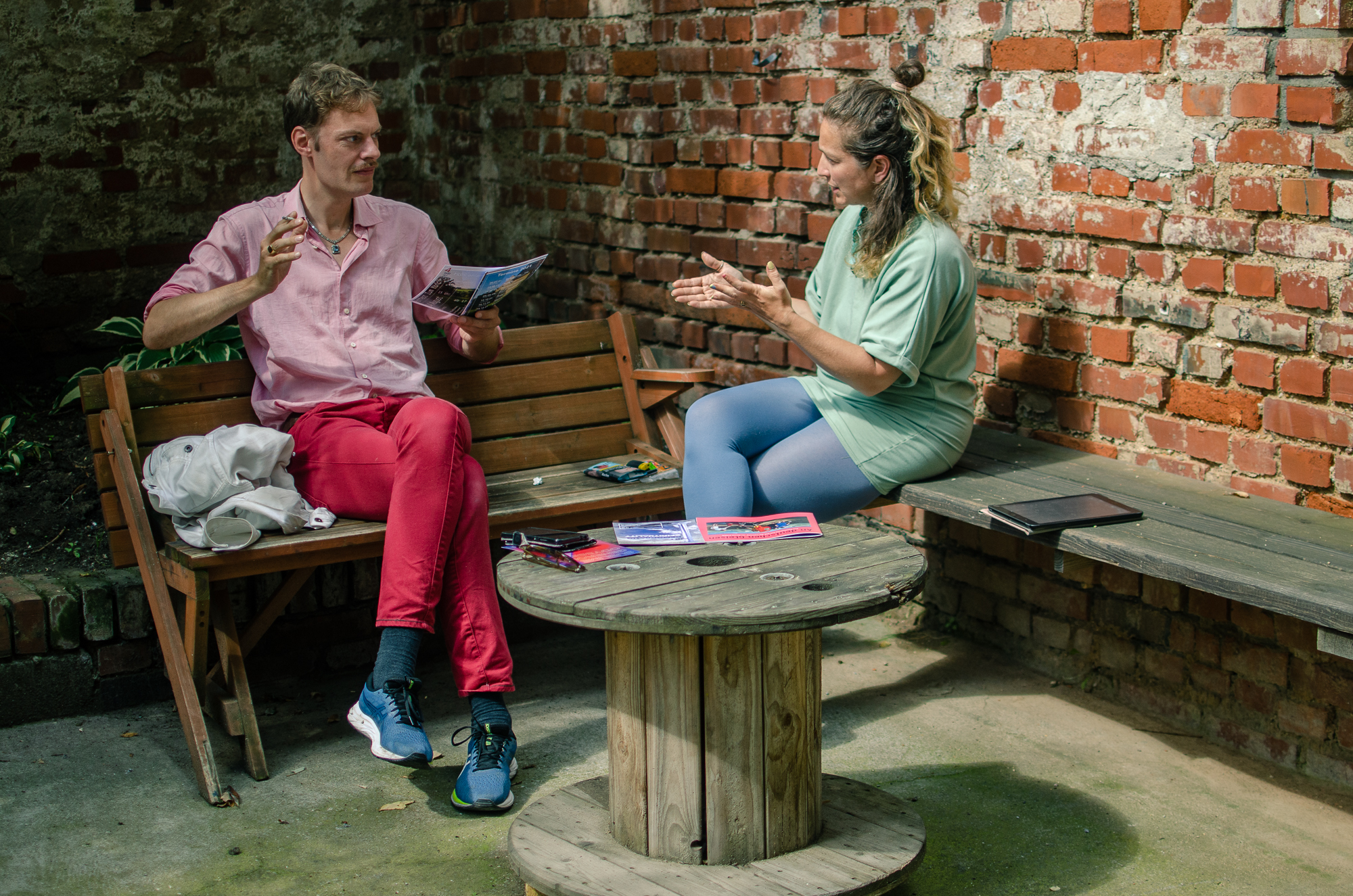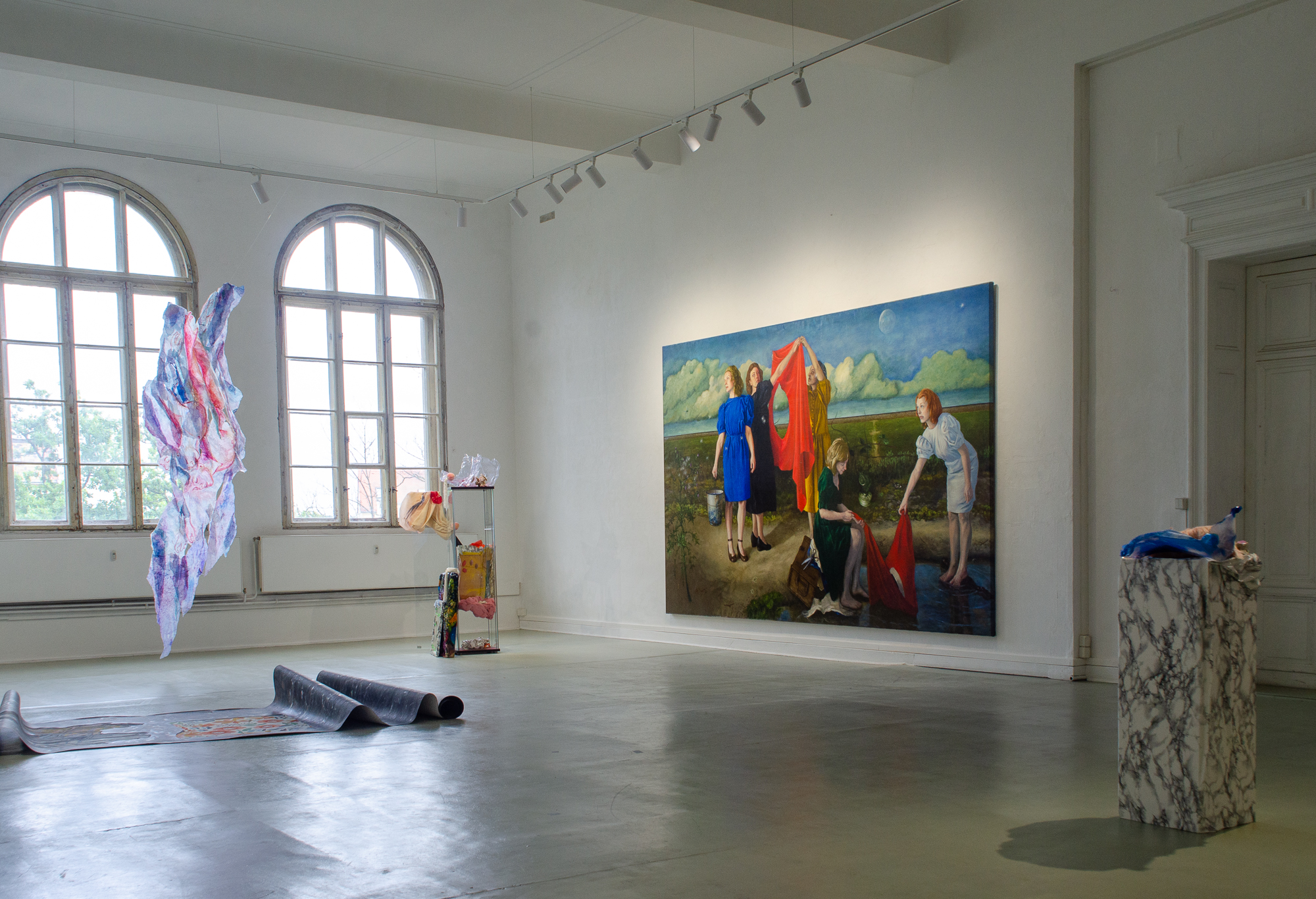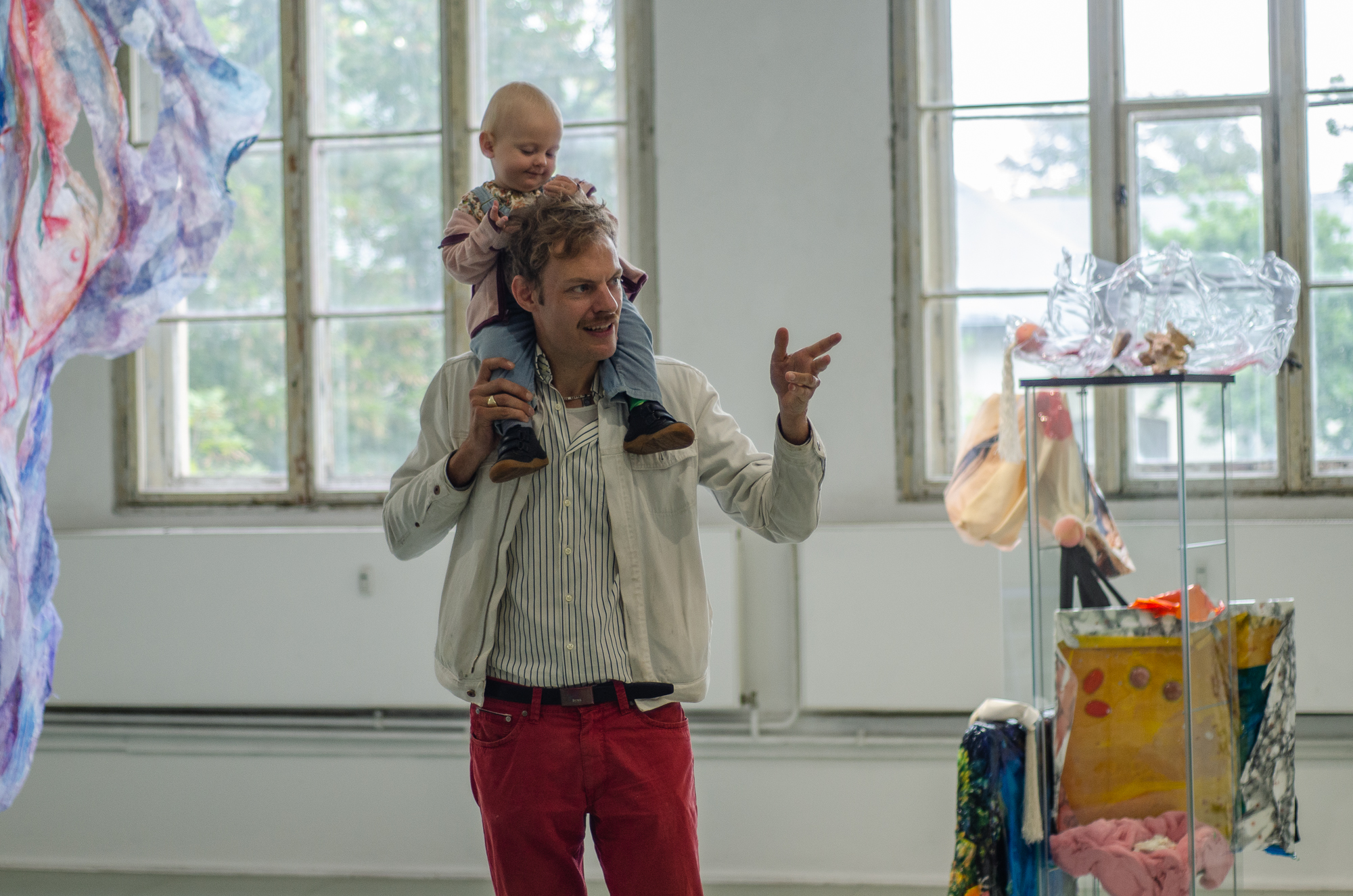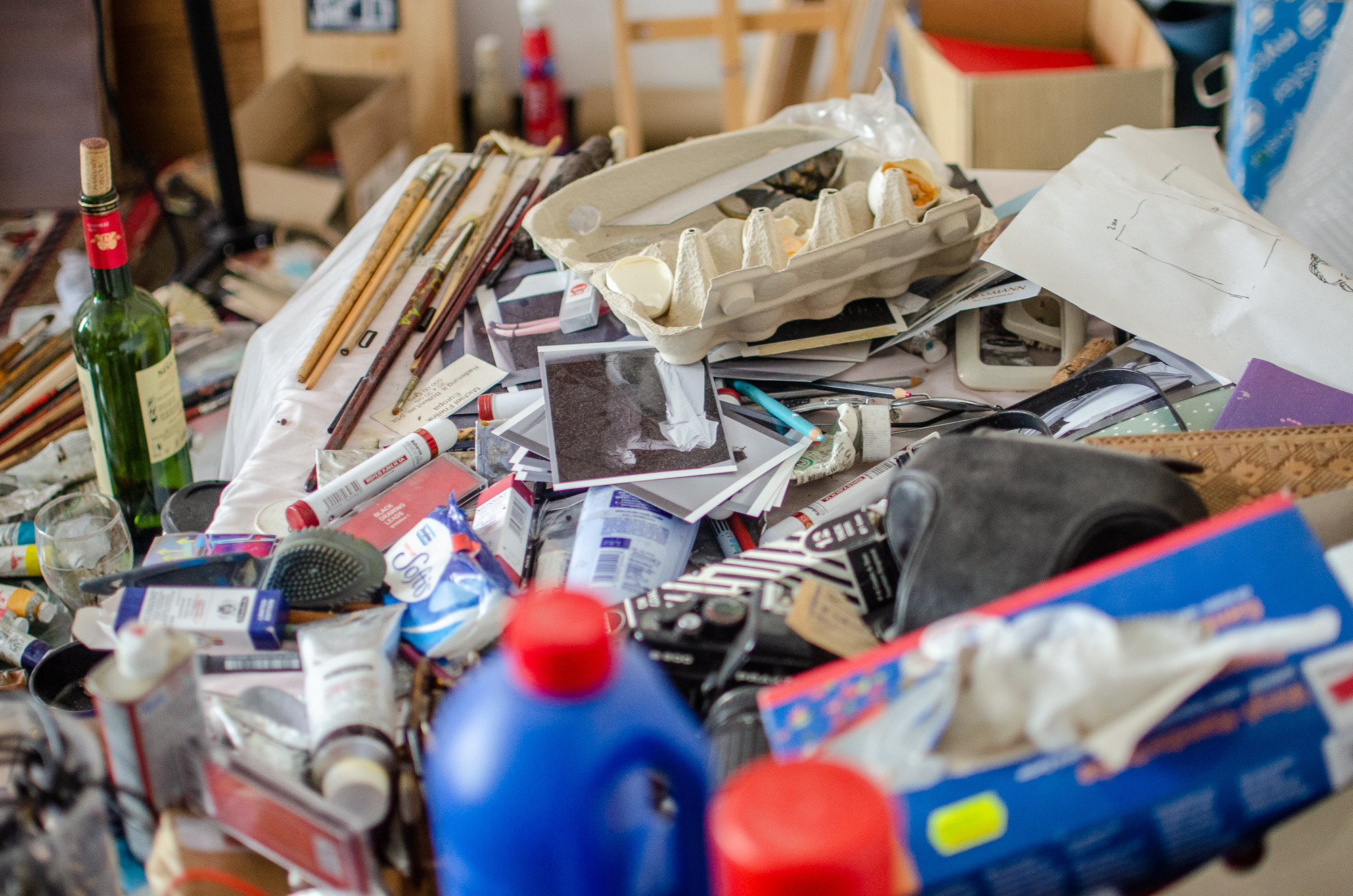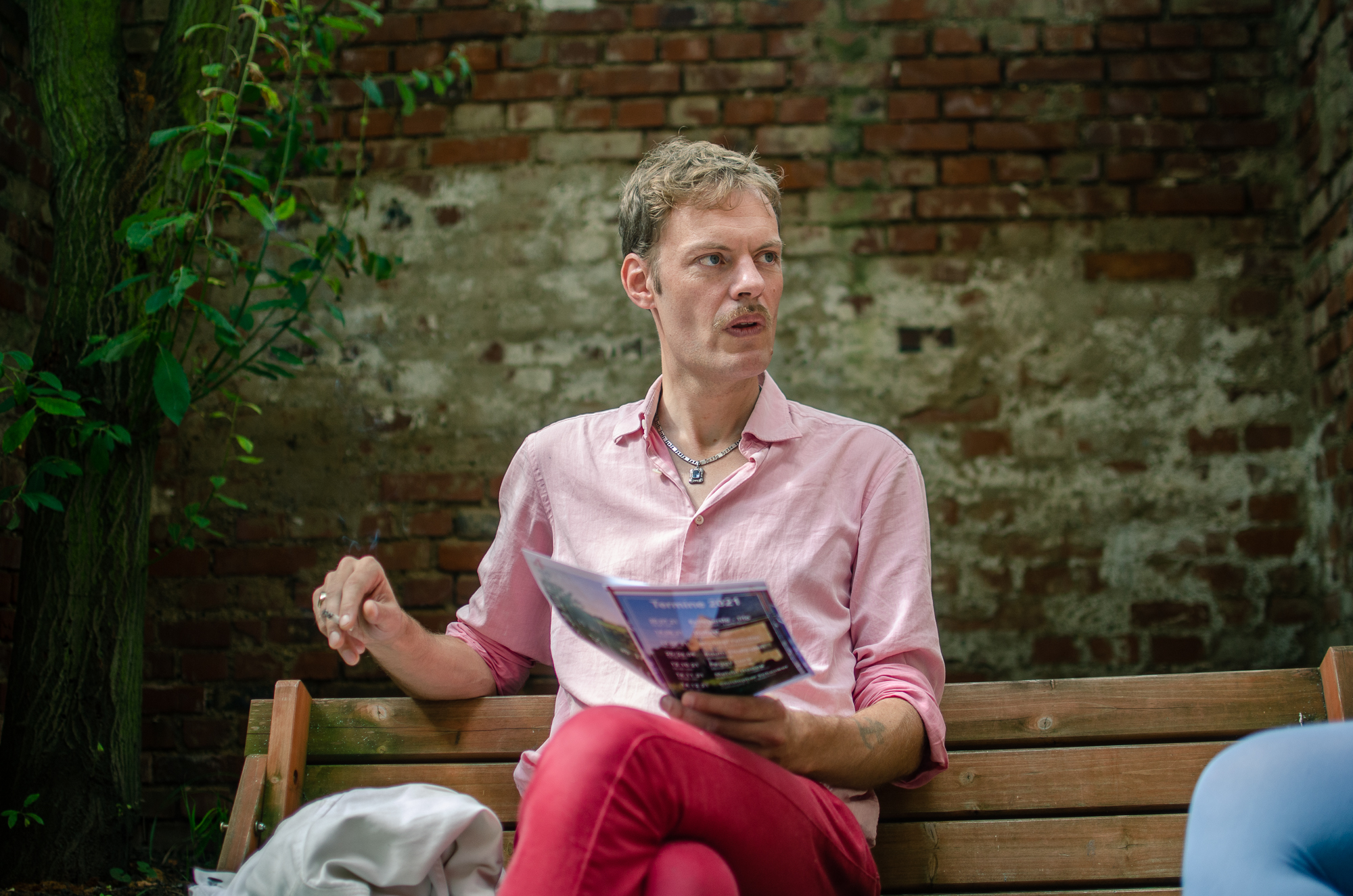If a regime falls in a forest, does it make noise? This is one of the witty titles Michiel Frielink chose for a painting depicting Muammar Gaddafi. The Libyan dictator treads on the soft snow of a European forest. Recent historic events are the subject matter of the artist’s practice, but an ironic twist is always present. It might be a way to create distance from the otherwise extremely serious circumstances painted so realistically. Red theatre curtains flank a group scene in one of the artworks, voluntarily interrupting the suspension of disbelief and deftly avoiding any implication of propaganda.
Michiel injects objects with personal and symbolic meanings
Objects often bear meanings in Michiel’s work. In the artwork Die Trennung (The Separation, 2020), commemorating German reunification, the division after World War II is symbolically represented by a variety of props. A woman wearing black and another wearing yellow hold a red cloth between them. This forms the colours of German flag. The central stripe is obtained by the use of the Nazi standard, deprived of the Swastika by the characters’ wise cutting. Therefore scissors divide and unite, masterfully selecting what to bring to the new Germanys from a troubled past. So does the railway track which separates and connects East and West. At the same it becomes the horizon line in the painting and serves the same function for the visible and invisible.
photos by Fanni Papp for PILOTENKUECHE
Old Masters’ realistic techniques are revitalised by Michiel
Michiel revitalises the heritage of history painting as the highest in the hierarchy of genres by adopting traditional techniques to represent contemporary events. He initiated it as an exploration into large-scale religious painting, such as Pontormo’s Deposition of the cross, a further reprisal of Old Masters’ tropes focused on German Romantics. First he styles and photographs real-life models in viable poses. Then he prepares the canvas. Then he sketches in white chalk and white tempera for mistakes to be corrected if needed.
Egg tempera is then the protagonist, epitomised as an egg in the hand of the painter in Michiel’s self-portrait. The painter’s Reichsapfel appears along with the Monomakh’s cap and cape and a machine gun, other symbols of tsarist power composing Boris Godunov’s opera costume. Michiel found the costume and invested it with the ironic aura typical of his work and its power deviated and obliterated, in so much as Rembrandt’s print on the background obscenely modified.
Upcoming exhibitions will further explore these topics
Correspondingly, Caspar David Friedrich’s classical ruins become part of a pastiche too. The landscape is depicted on an object Michiel dreamt of; a bucket imbued with meaning when passed among a group of women. The original awe they should inspire becomes part of a larger and postmodern image. Multiple references concur in evoking a “magical realism”, peculiar to Carel Willink, a fellow Dutch painter and chosen forefather to Michiel. Upcoming exhibitions will display further exploration of these topics, merging traditional realistic techniques for large-scale painting, delicate imagery of historic events, and a self-deprecating sense of humour.
written by Arturo Menozzi
Michiel is currently participating in our local residency program. Catch up with his activities on his website and her Instagram or in person at the shows in Leipzig.
airy democratic spirituality
Alte Handelsschule.
Giesserstr 75
vernissage:
20 Aug
19.00 – 22.00
open:
21-25 Aug
12.00 -16.00
sublime generous odyssey
PILOTENKUECHE
Franz-Flemming-Str 9
vernissage:
Sat 18 Sept
19.00 – 22.00
open:
19-22 Sept
14.00 -18.00

